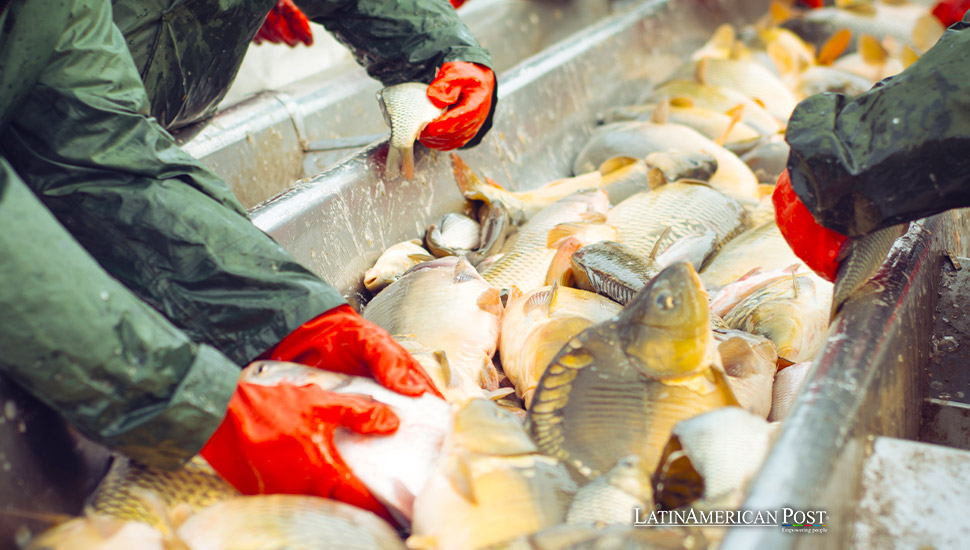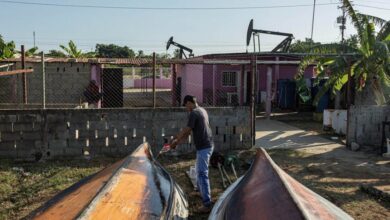Mexico’s Agricultural and Fisheries Growth Defies Drought and Global Challenges

Despite a challenging drought in the last agricultural year, Mexico’s agricultural and fisheries production grew by 4.7% between 2018 and 2023, securing its position as the world’s eleventh-largest food producer, according to the Secretariat of Agriculture and Rural Development (Sader).
Despite facing significant challenges, including a severe drought, Mexico’s agricultural and fisheries sectors have shown remarkable resilience and growth. Between 2018 and 2023, these sectors grew by 4.7%, solidifying Mexico’s position as the world’s eleventh-largest food producer. This notable achievement was highlighted in a recent report by the Secretariat of Agriculture and Rural Development (Sader), which reflects the nation’s robust agricultural policies and the dedication of its producers. This resilience is a testament to the strength and determination of Mexico’s agricultural and fisheries industries.
Under the presidency of Andrés Manuel López Obrador (2018-2024), Mexico has maintained its status as a global leader in the production and trade of several essential agricultural products. According to Sader, Mexico leads the world in the export of beer, tequila, berries, avocados, tomatoes, mangoes, and asparagus. Additionally, it ranks second in producing chili peppers, broccoli, cabbage, cauliflower, lemons, and cucumbers.
The comprehensive report, titled ‘Panorama Agroalimentario 2018-2024’, was presented by Víctor Manuel Villalobos, head of Sader. Villalobos revealed that in the agricultural year 2023, which ended in March 2024, Mexico’s agricultural production reached 271.8 million tons. Livestock production totaled 25.1 million tons, and fisheries production hit 2 million tons, generating a substantial 1.59 trillion pesos (approximately $83.58 billion) and employing 6.4 million people.
“Besides meeting the country’s food demand, Mexico achieved a positive agro-food and agro-industrial trade balance during this administration,” Villalobos noted. “In 2023, this surplus reached $7.6 billion, the third-highest positive balance in 29 years.” This success underscores the sector’s resilience and ability to thrive despite global challenges such as the pandemic, the war in Ukraine, and the impact of the climate crisis.
Addressing Food Security and Poverty
The pandemic, economic disruptions, and the ongoing climate crisis have tested Mexico’s agricultural sector and highlighted its critical role in national food security. Villalobos commended the dedication of Mexican producers, who continued to supply food under adverse conditions, ensuring that essential products reached households across the country.
A significant outcome of these efforts is the reduced percentage of the population lacking access to nutritious and quality food. According to the National Council for the Evaluation of Social Development Policy (Coneval), this percentage dropped from 22.2% in 2018 to 18.2% in 2022, lifting 4.1 million people out of food insecurity.
Patricia Ornelas, head of the Agricultural and Fisheries Information Service (SIAP), emphasized that the ‘Panorama Agroalimentario’ report documents the transformative journey of Mexico’s agro-food sector from 2018 to 2024. In 2023 alone, the industry produced 298.9 million tons of agricultural and fishery products, cultivated on 20 million hectares of farmland and 108.9 million hectares of livestock land.
Lina Pohl, the Food and Agriculture Organization (FAO) representative in Mexico, acknowledged the government’s substantial efforts to advance the agro-food sector amid considerable challenges. “The Mexican government’s task has not been easy,” Pohl remarked, highlighting the duality of Mexico’s agricultural landscape, with large-scale producers in the north and small-scale farmers in the south-southeast.
The López Obrador administration has made significant strides in supporting small-scale farmers, particularly in the south-southeast regions. It has shifted its focus to ensure these producers receive the necessary resources and support. This inclusive approach aims to bridge the gap between large and small-scale farming operations, promoting equitable growth and sustainability across the sector.
Innovation and Sustainability: Key Drivers of Growth
As Mexico continues to navigate the complexities of global agricultural markets, innovation and sustainability remain at the forefront of its strategy. Adopting advanced agricultural technologies, improved farming practices, and sustainable resource management are essential to maintaining and enhancing productivity. This commitment to innovation and sustainability is a promising sign for the future of Mexico’s agricultural and fisheries sectors.
Technology in agriculture has enabled Mexican farmers to optimize crop yields, manage resources more efficiently, and reduce environmental impact. Sustainable practices, such as precision farming, water conservation techniques, and integrated pest management, have become increasingly prevalent, contributing to the sector’s resilience against climate variability and other external pressures.
Moreover, the Mexican government has invested in research and development to drive agricultural innovation. Collaborative efforts with academic institutions, research organizations, and private sector partners have fostered the development of new crop varieties, improved animal husbandry practices, and advanced fisheries management techniques. These initiatives are designed to enhance food security, boost productivity, and ensure the long-term sustainability of Mexico’s agricultural and fisheries sectors.
At the heart of Mexico’s agricultural success is the empowerment of its farmers. The government has implemented various programs and policies to support small and medium-sized producers, providing them access to credit, technical assistance, and market opportunities. These efforts have helped increase rural incomes, improve livelihoods, and promote social and economic development.
Education and training programs have also played a crucial role in building the capacity of Mexican farmers. Through extension services, workshops, and training sessions, farmers are equipped with the knowledge and skills needed to adopt modern agricultural practices, improve productivity, and navigate the complexities of market dynamics.
Rural development initiatives have focused on infrastructure development, including constructing roads, irrigation systems, and storage facilities. These investments have enhanced connectivity, reduced post-harvest losses, and facilitated the efficient distribution of agricultural products, contributing to the sector’s overall growth and competitiveness.
Future Prospects and Strategic Priorities
Mexico’s agricultural and fisheries sectors are poised for continued growth and development. The government’s strategic priorities include strengthening the sector’s resilience, promoting sustainable practices, and enhancing value-added processing and export capabilities.
Expanding access to international markets remains a key objective, with efforts to negotiate trade agreements, reduce trade barriers, and enhance the competitiveness of Mexican agricultural products. By leveraging its comparative advantages and maintaining high quality and safety standards, Mexico aims to increase its market share and establish itself as a leading global food producer.
In addition to market expansion, the government is committed to addressing the challenges of climate change. Adaptation and mitigation strategies are being developed to reduce the agricultural sector’s vulnerability to climate impacts, such as droughts, floods, and extreme weather events. Investments in climate-resilient infrastructure, promoting climate-smart agriculture practices, and developing early warning systems are integral to these efforts.
Another priority is integrating sustainable fisheries management practices, with a focus on ensuring the long-term viability of fish stocks, protecting marine ecosystems, and promoting responsible fishing practices. Collaborative efforts with international organizations, regional bodies, and local communities are essential to achieving these goals and maintaining the health and productivity of Mexico’s fisheries resources.
Mexico’s agricultural and fisheries sectors have demonstrated remarkable resilience and growth in the face of significant challenges. The achievements of the past five years under the leadership of President Andrés Manuel López Obrador reflect the dedication of Mexican producers, the effectiveness of government policies, and the sector’s capacity to adapt and innovate.
As Mexico continues to navigate the complexities of the global agricultural landscape, the focus remains on sustainability, innovation, and inclusivity. By empowering farmers, promoting sustainable practices, and enhancing market access, Mexico is well-positioned to build on its successes and achieve long-term food security, economic development, and environmental sustainability.
Also read: Scientists and Athletes Defend Mexico’s Surf Paradise from Economic Development Damages
The ‘Panorama Agroalimentario 2018-2024’ report serves as a testament to the progress and potential ahead. With continued commitment, collaboration, and strategic investment, Mexico’s agricultural and fisheries sectors are set to thrive, contributing to its people’s well-being and the nation’s prosperity.




